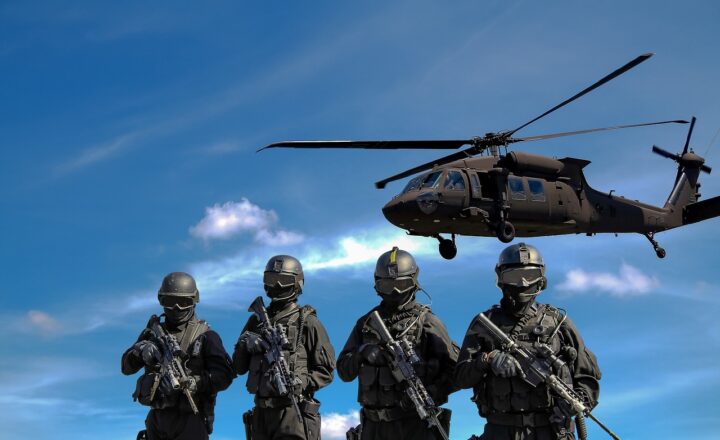How Firefighters Are Trained to Handle Chemical Spills and Toxic Hazards
November 13, 2024

Fires are an ever-present threat that firefighters bravely confront, but the dangers they face extend far beyond flames and smoke. Among these dangers are chemical spills and toxic hazards that pose significant risks not only to the environment but also to public safety. Understanding how firefighters are trained to tackle these challenges is essential for appreciating their role in modern society. This article delves into the specialized training programs and techniques firefighters undergo to handle chemical spills and toxic materials effectively.
1. The Importance of Hazardous Materials Training
Firefighters are often the first responders to hazardous material incidents, including chemical spills from industrial sites, vehicle accidents, or natural disasters. Without proper training, these situations can become deadly. Hazardous materials training (HAZMAT training) equips firefighters with the knowledge and skills needed to assess risks, understand materials, and implement safety measures for themselves and the public.
A core component of HAZMAT training is knowing how to identify various hazardous materials. Firefighters learn to recognize labels, symbols, and other indicators on containers that provide critical information regarding the toxicity and flammability of the substances involved.
2. Types of Hazardous Materials Classes
Hazardous materials are categorized into several classes, each with unique properties and risks:
- Class 1 – Explosives: Materials that can explode under certain conditions, necessitating extreme caution and careful handling.
- Class 2 – Gases: Includes flammable and toxic gases that may produce harmful effects through direct exposure or inhalation.
- Class 3 – Flammable Liquids: Liquids with a flash point below 100°F (37.8°C), requiring measures to prevent ignition and manage spills.
- Class 4 – Flammable Solids: Materials that can ignite and present a fire hazard when exposed to moisture or air.
- Class 5 – Oxidizers and Organic Peroxides: Compounds that can enhance combustion, requiring firefighters to isolate them from flammable materials.
- Class 6 – Toxic Materials: Substances that pose immediate health dangers by inhalation, ingestion, or skin contact.
- Class 7 – Radioactive Materials: Materials that emit radiation and require specialized training and equipment for safe handling.
- Class 8 – Corrosives: Items that can destroy living tissue or corrode materials, emphasizing the importance of protective gear.
- Class 9 – Miscellaneous: Includes various materials that don’t fit neatly into the other categories but can still be dangerous.
This classification allows firefighters to identify and respond appropriately to different types of chemical hazards.
3. Training Programs: Structure and Curriculum
Firefighter training programs typically include a combination of classroom instruction and hands-on practice. Here’s an overview of what is often covered in these training programs:
- Theory of Hazardous Materials: Understanding the chemistry, behavior, and properties of hazardous substances is essential. Firefighters learn about different materials, how they react, and potential health effects on human beings.
- Personal Protective Equipment (PPE): Firefighters must learn to use and don the appropriate PPE, including chemical-resistant suits, gloves, and respiratory protection systems to safeguard themselves against exposure.
- Decontamination Procedures: Proper methods for decontaminating personnel and equipment after exposure to hazardous materials are stressed to prevent further contamination and ensure safety.
- Incident Command Systems (ICS): Training firefighters in effective communication and leadership during hazardous material incidents is crucial. This includes understanding the ICS framework to manage resources and coordination among various agencies effectively.
- Simulation Training: Many training programs incorporate real-life simulations that replicate potential emergency scenarios. These drills allow firefighters to practice their skills and make critical decisions in a controlled environment.
The combination of theoretical knowledge and practical skills ensures that firefighters are prepared for hazardous material incidents when they arise.
4. Responding to Incidents: The Action Plan
When responding to a chemical spill or toxic hazard, firefighters must follow a structured action plan:
- Assessment: The first step involves quickly assessing the scene, identifying hazardous materials (using guides like the Emergency Response Guidebook), and determining the necessary resources for an effective response.
- Securing the Area: Firefighters are responsible for establishing a safety perimeter to prevent unauthorized personnel from entering the scene.
- Evacuation when Necessary: If toxic gas release or spill impacts surrounding areas, firefighters coordinate evacuation efforts to protect civilians.
- Containment and Cleanup: Utilizing appropriate methods and neutralizing agents, firefighters control and contain spills to mitigate environmental damage.
- Decontamination Post-Incident: After managing the incident, firefighters must undergo thorough decontamination procedures before returning to service or entering public areas.
This systematic approach ensures effective management of hazardous scenarios while prioritizing the safety of firefighters and the public alike.
5. Continued Education and Staying Updated
Hazardous material regulations and procedures evolve with industry standards and scientific discoveries. Firefighters are required to engage in continued education to stay abreast of these changes.
Regular refresher courses, workshops, and training scenarios help reinforce key concepts and introduce new techniques relevant to HAZMAT incidents. Additionally, developments in technology—such as drones and real-time sensors—are changing how first responders approach hazardous materials, emphasizing the need for ongoing education and adaptability.
Conclusion: The Valor of Firefighters in Hazardous Situations
The rigorous training that firefighters undergo to handle chemical spills and toxic hazards is a testament to their dedication, bravery, and commitment to public safety. As they confront the complexities of hazardous materials, their knowledge and preparedness become crucial in saving lives and protecting the environment.
Firefighters train tirelessly, ensuring that they are equipped to face the myriad of dangers posed by hazardous materials. Their roles extend far beyond just combating fires; they are guardians of safety who respond with expertise to protect their communities from various hazards.
In a world fraught with potential hazards, recognizing and supporting these brave individuals becomes imperative for ensuring overall safety. Understanding the rigorous standards and protocols in place for firefighters when responding to chemical spills and toxic hazards allows us to appreciate their vital contributions to society.
Whether it’s through community support, advocacy for proper funding, or volunteering, everyone can play a role in ensuring that our firefighters are equipped to face the challenges of hazardous materials in an ever-evolving landscape.







